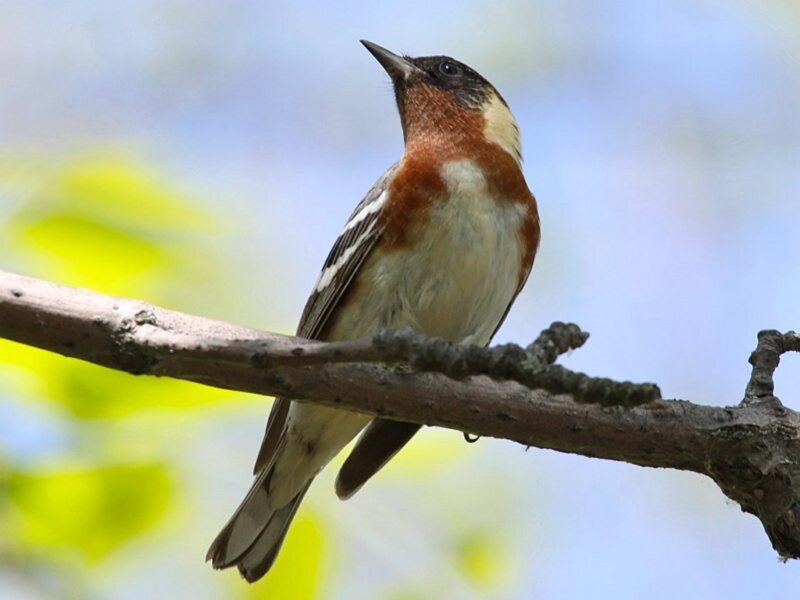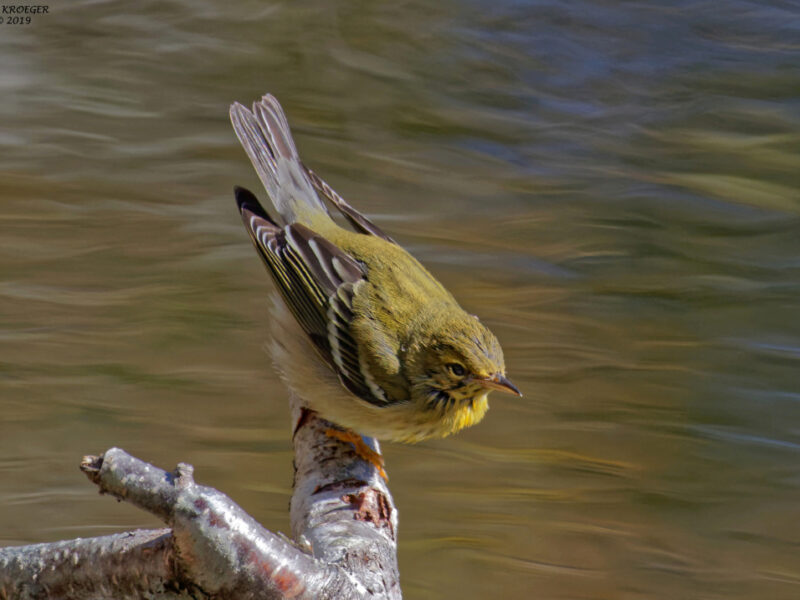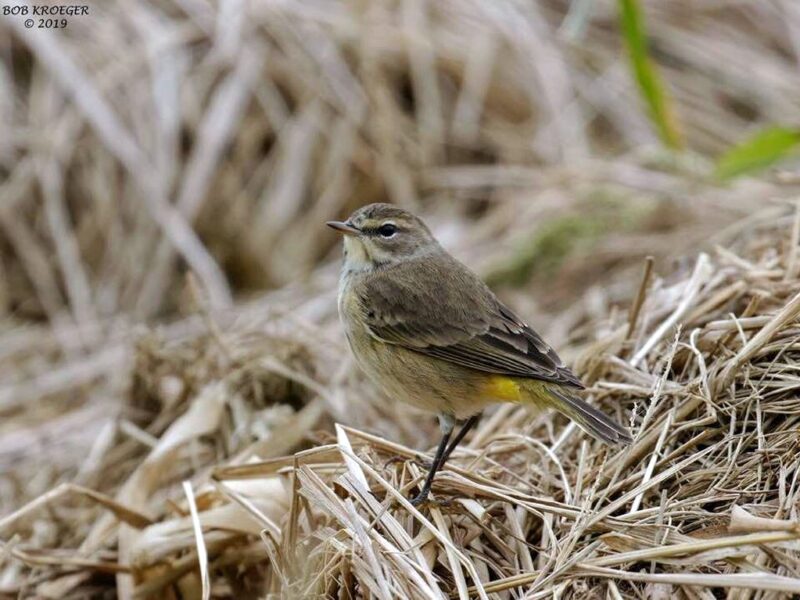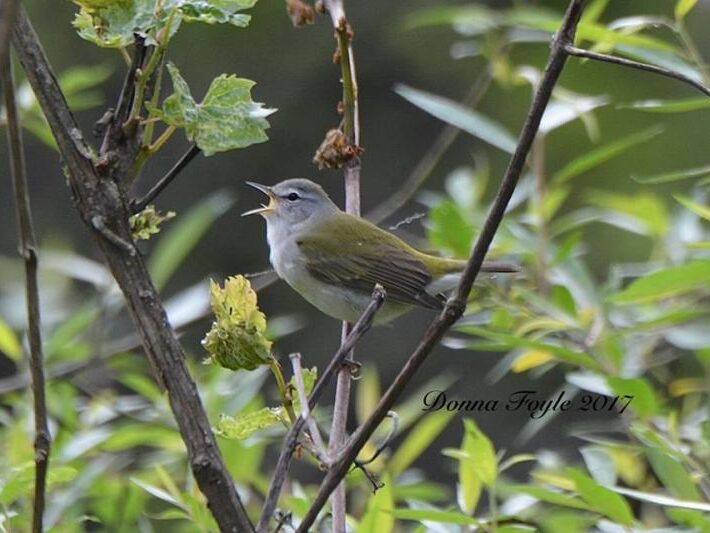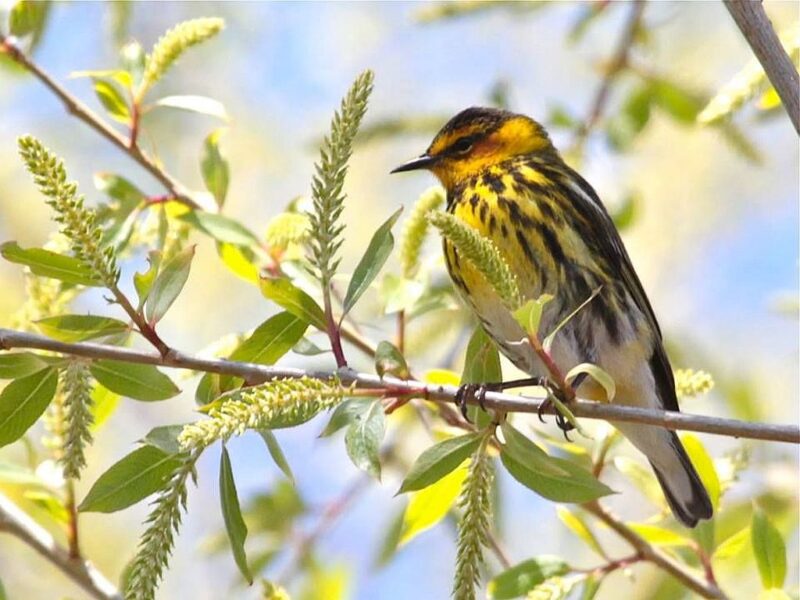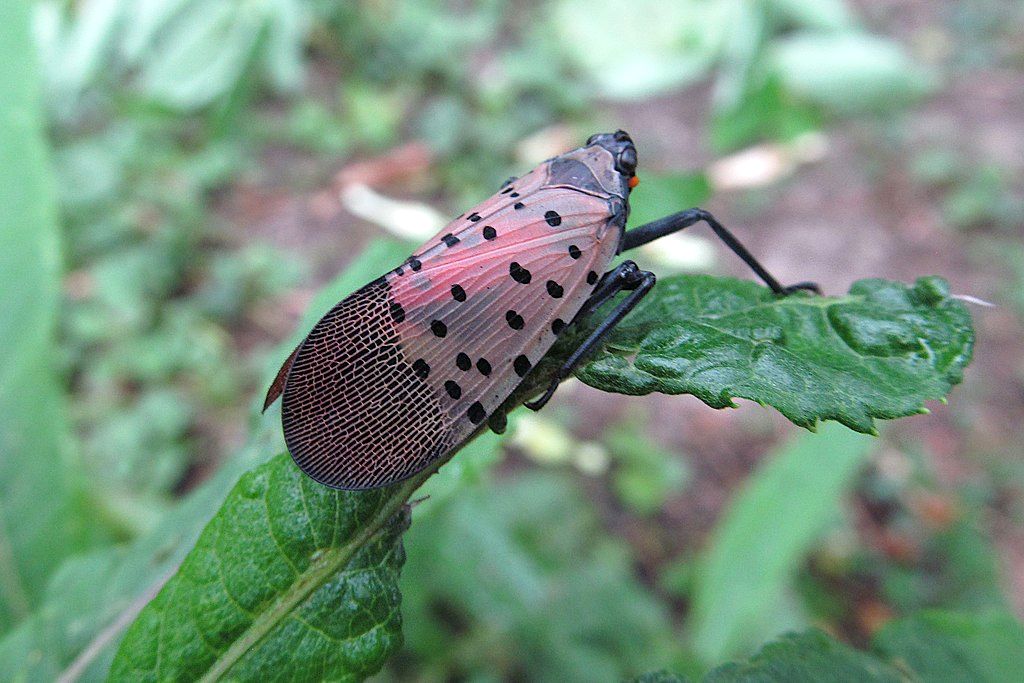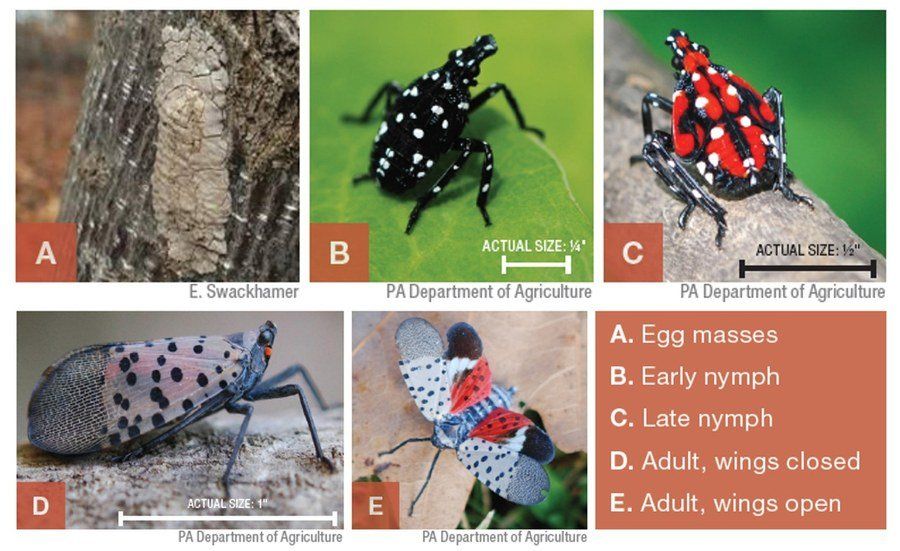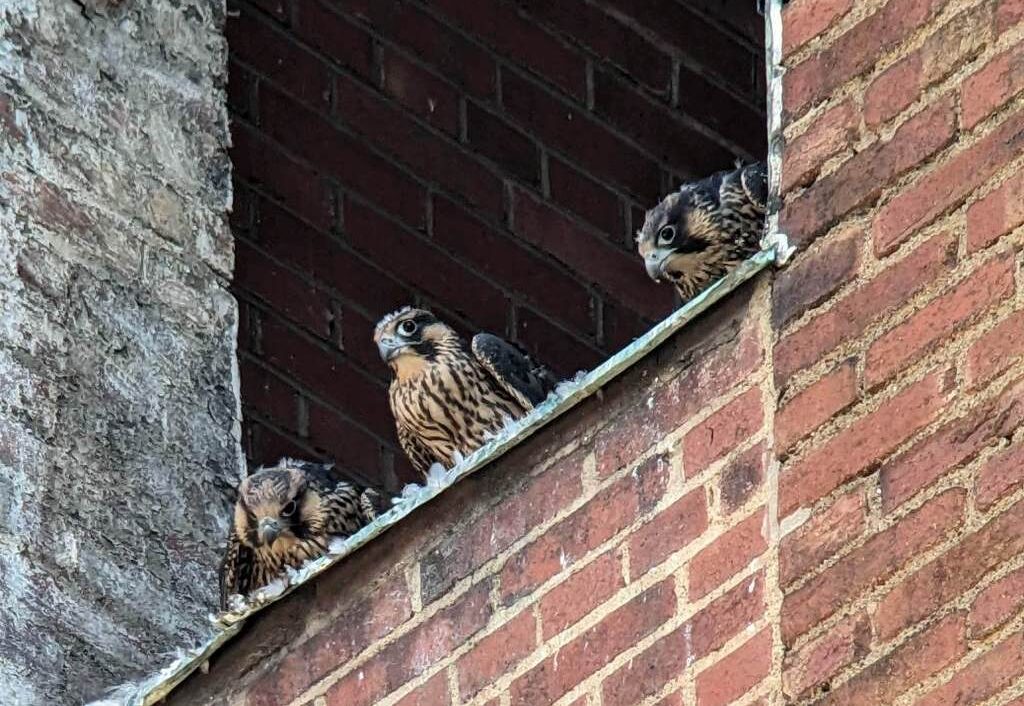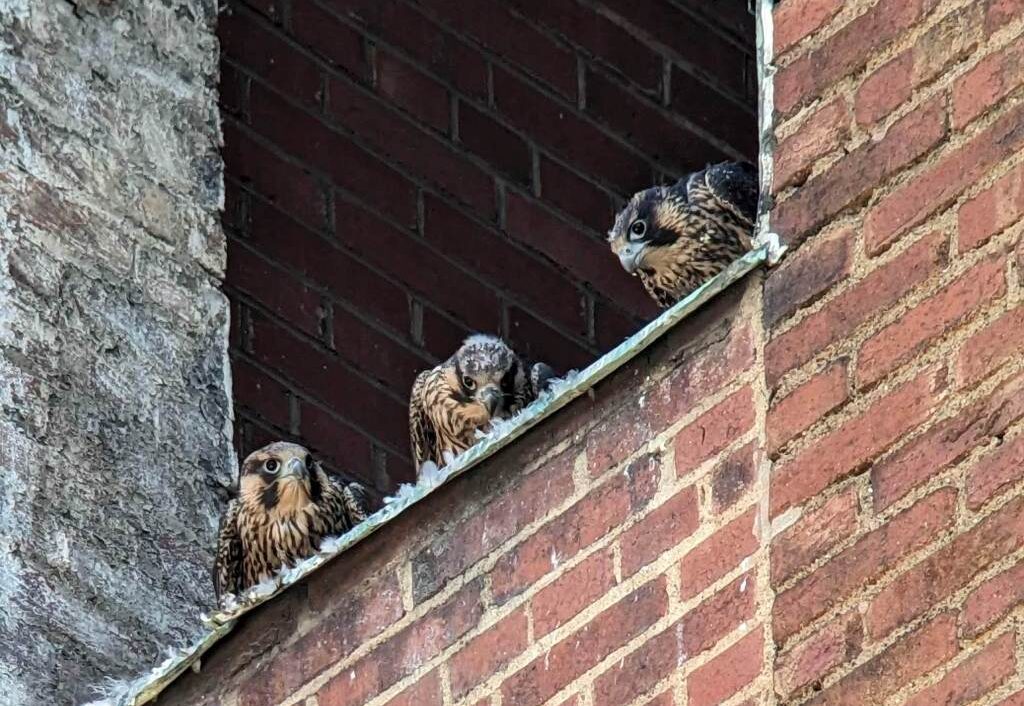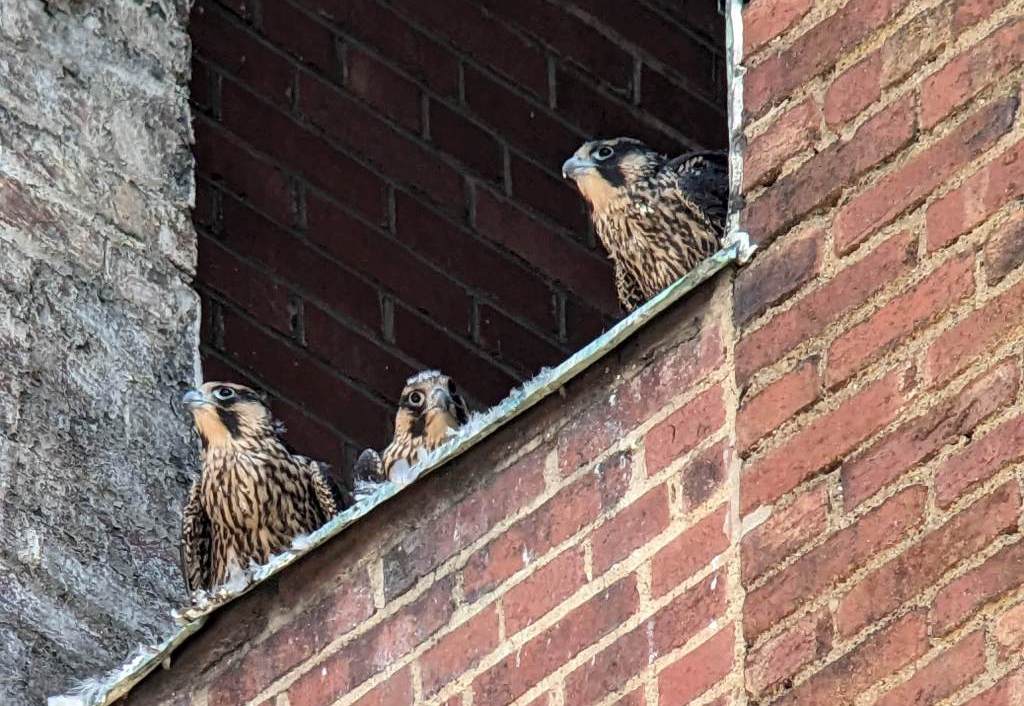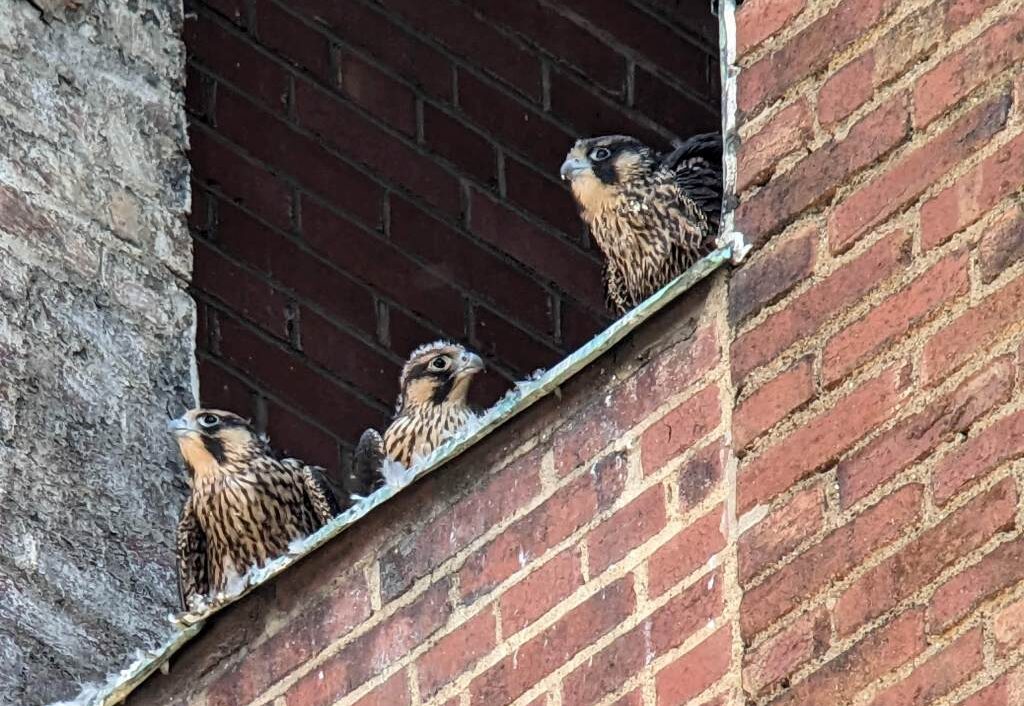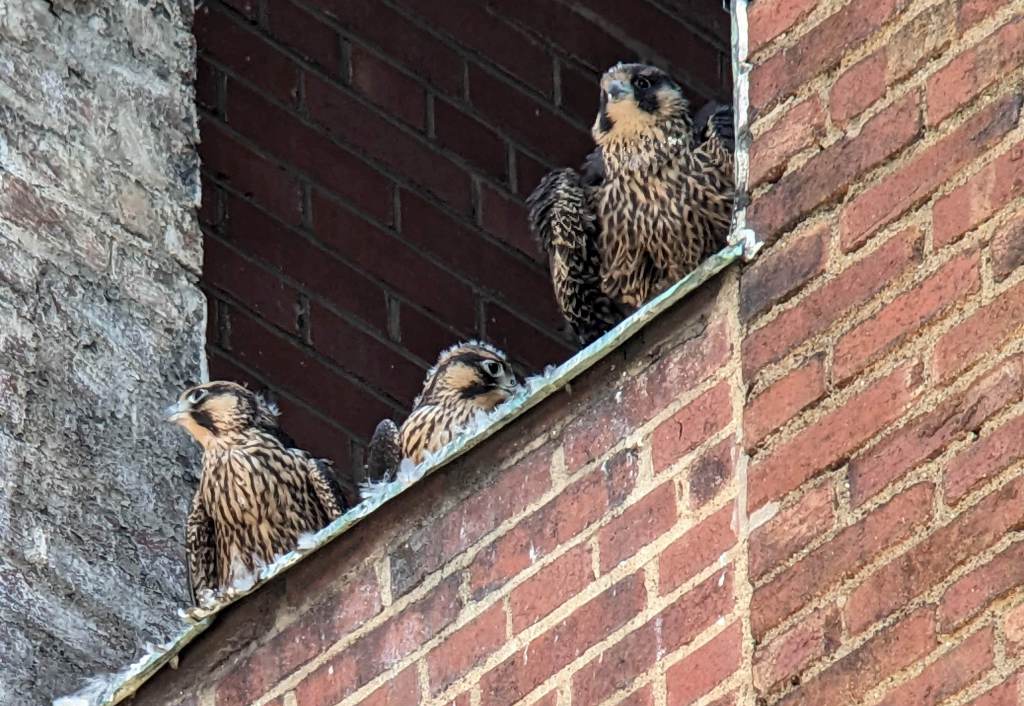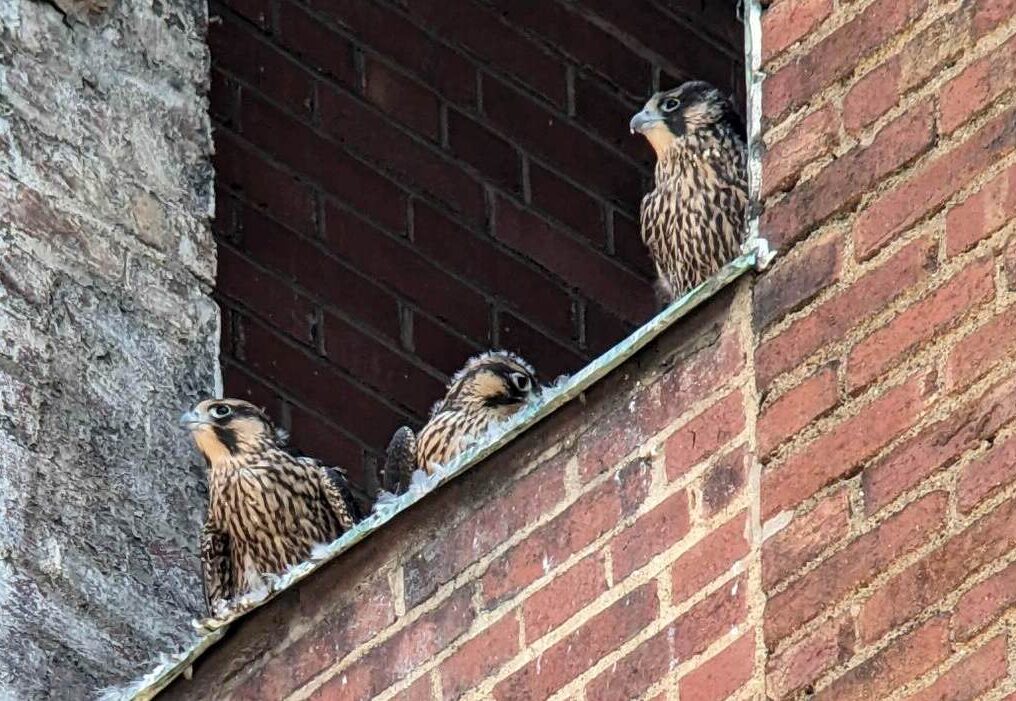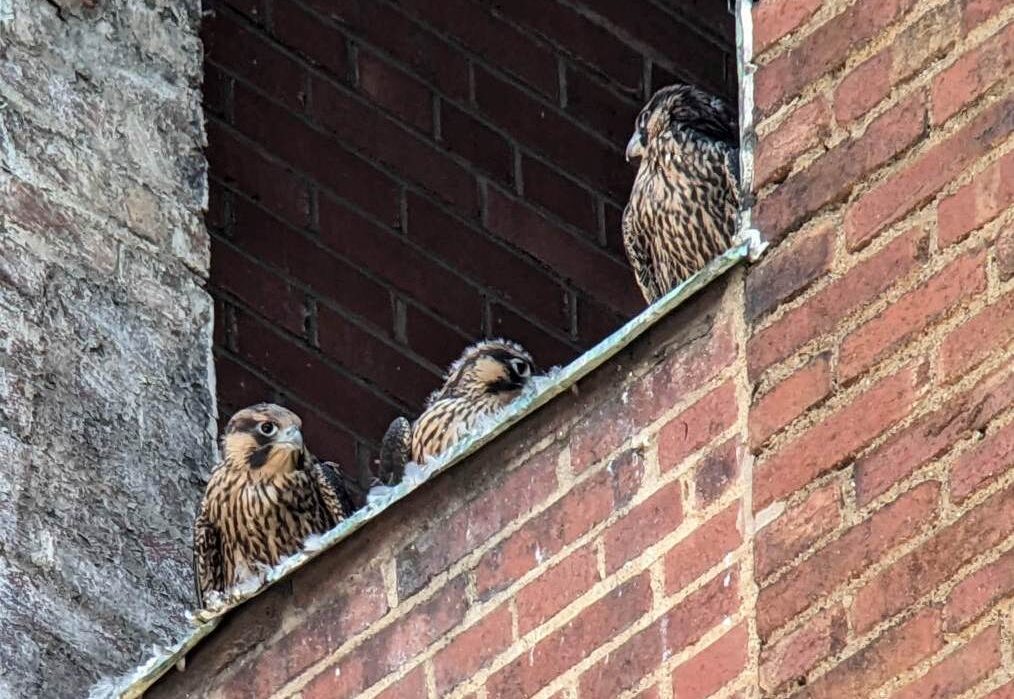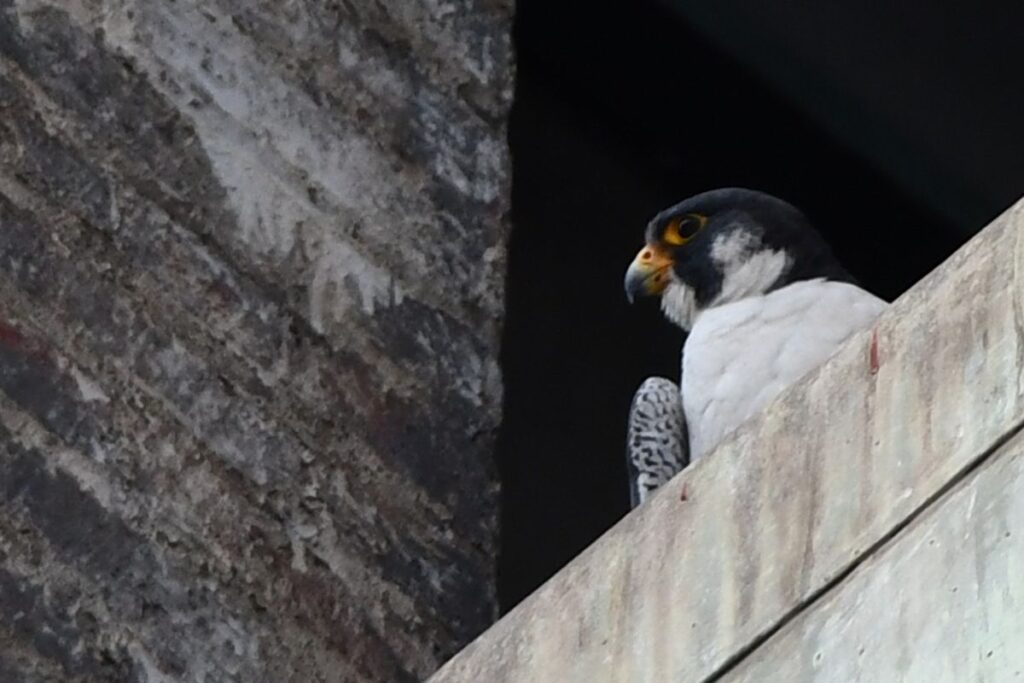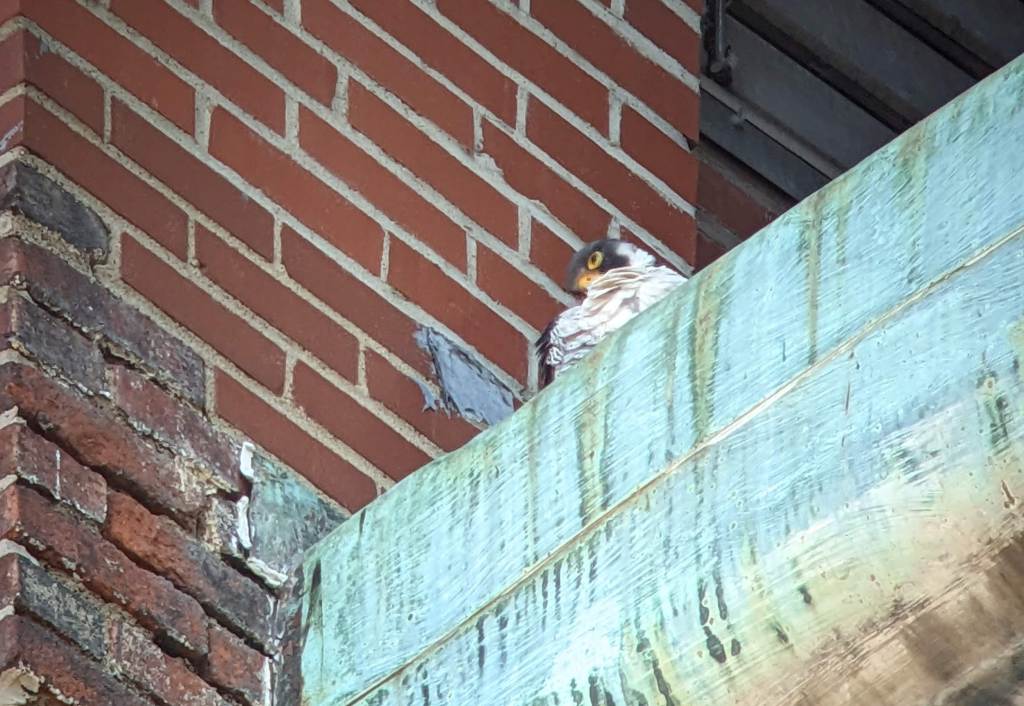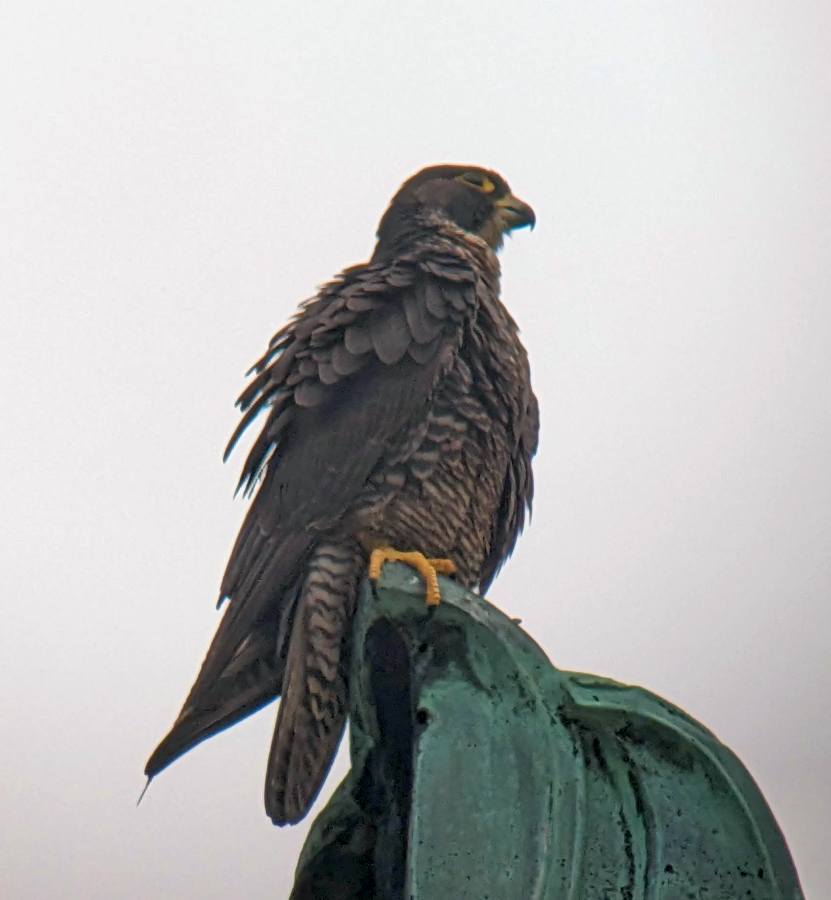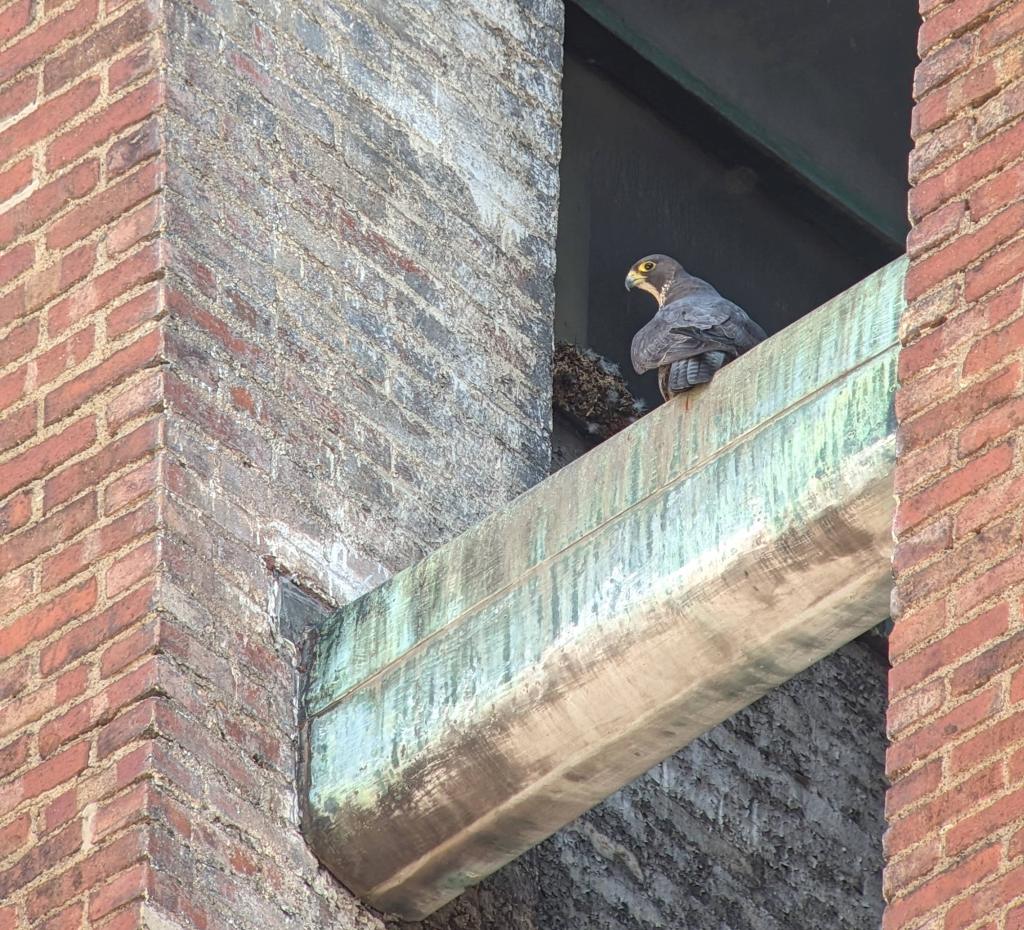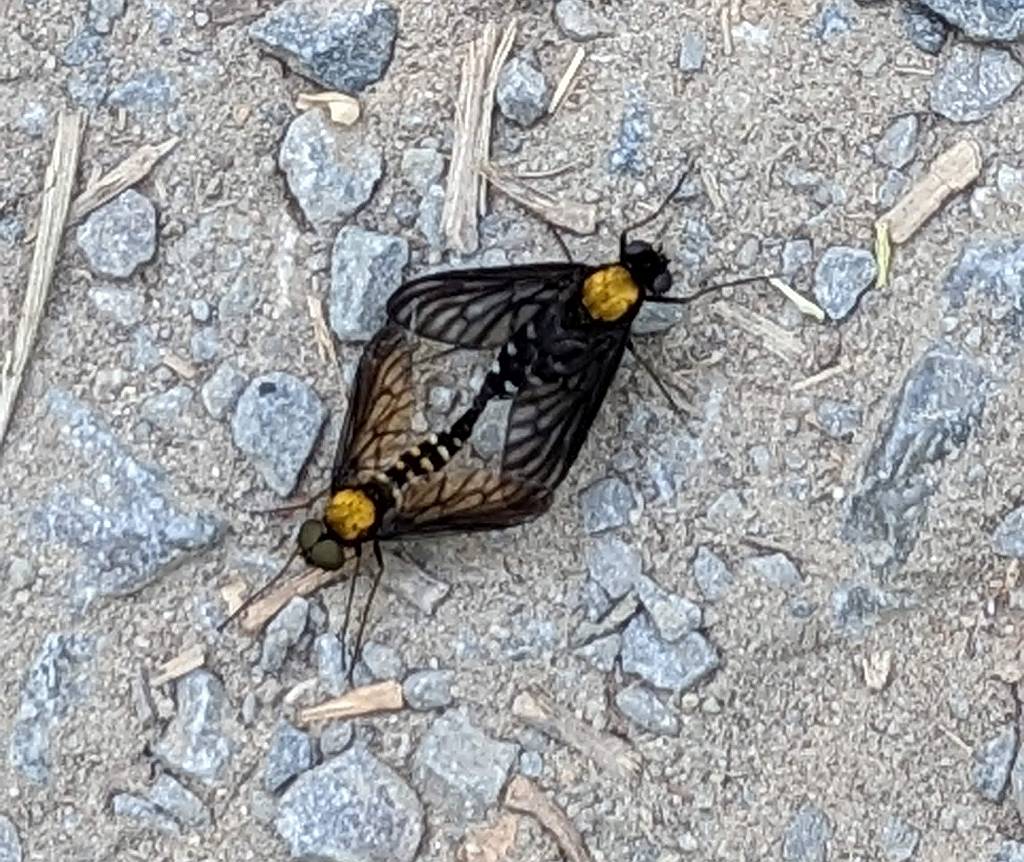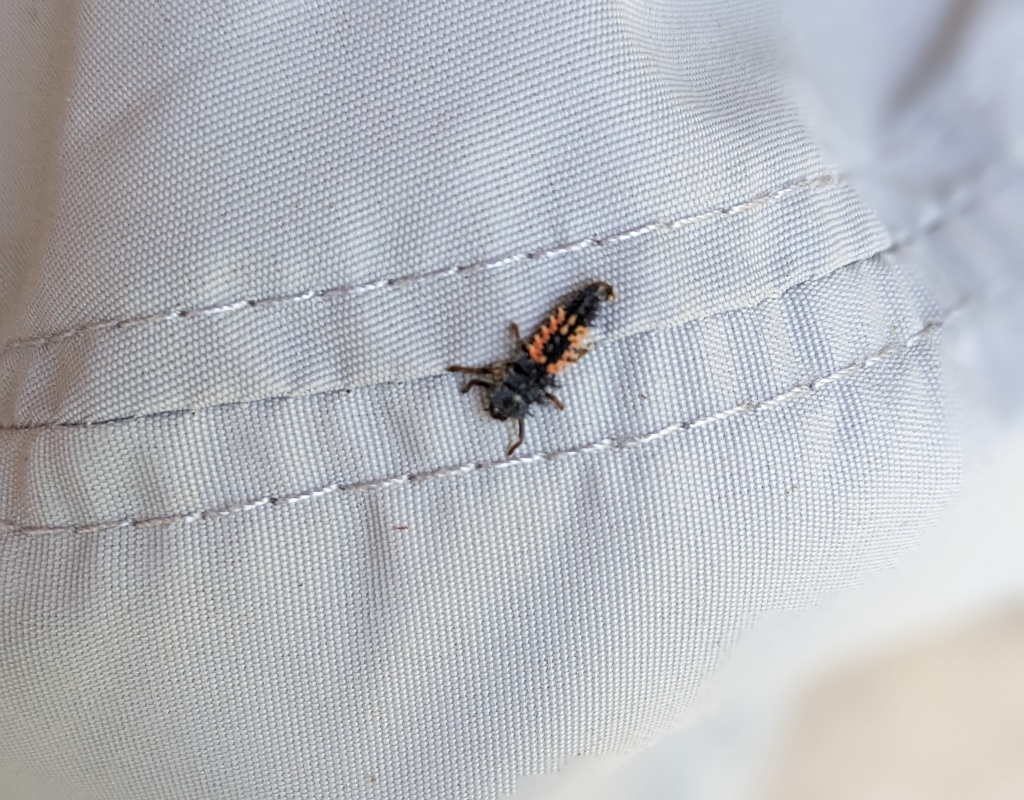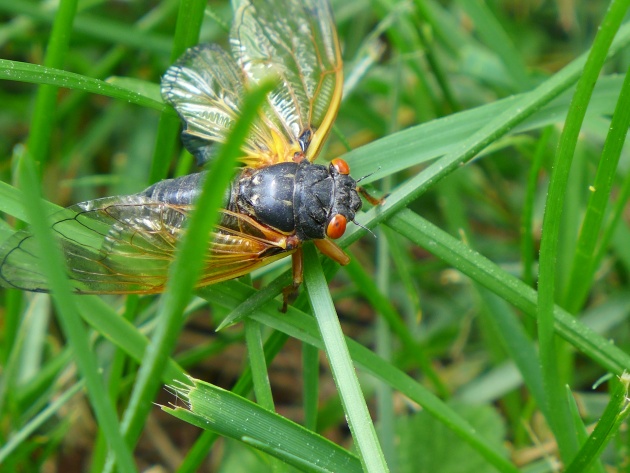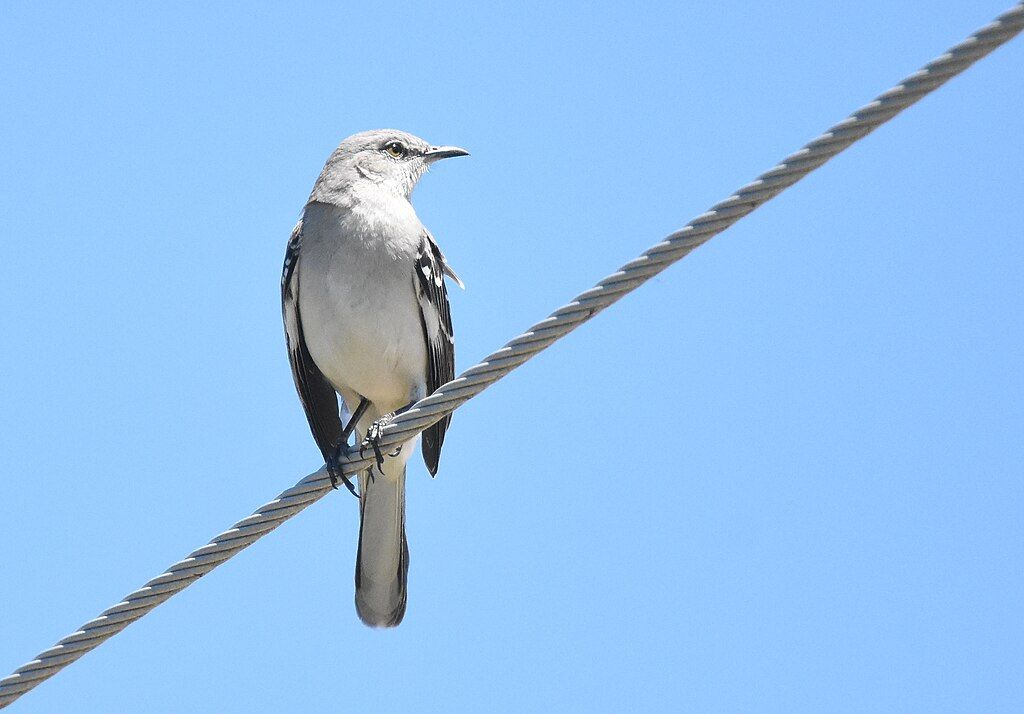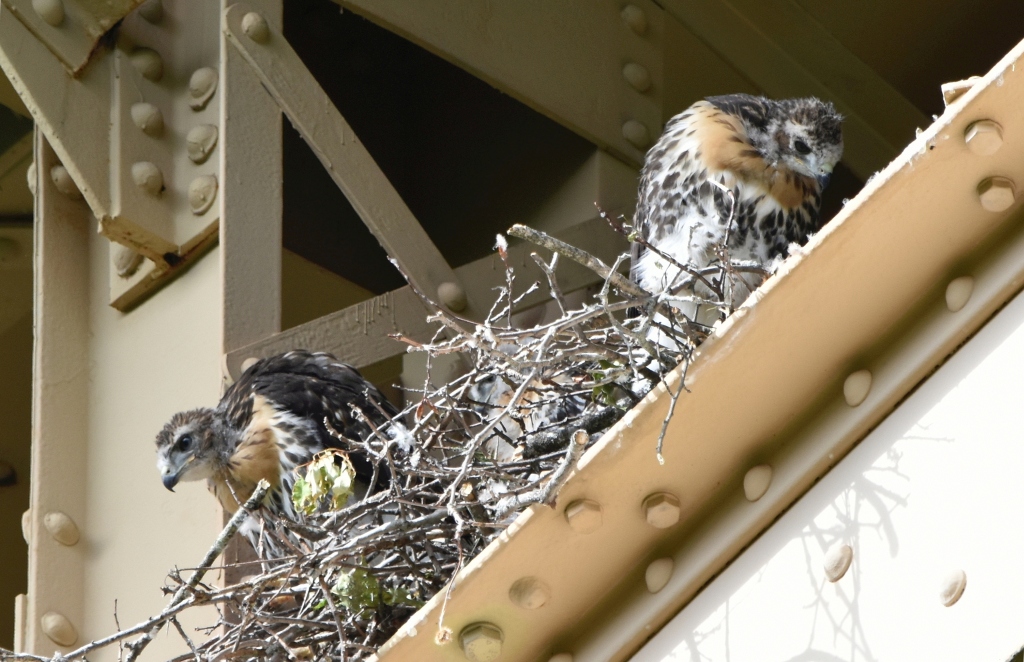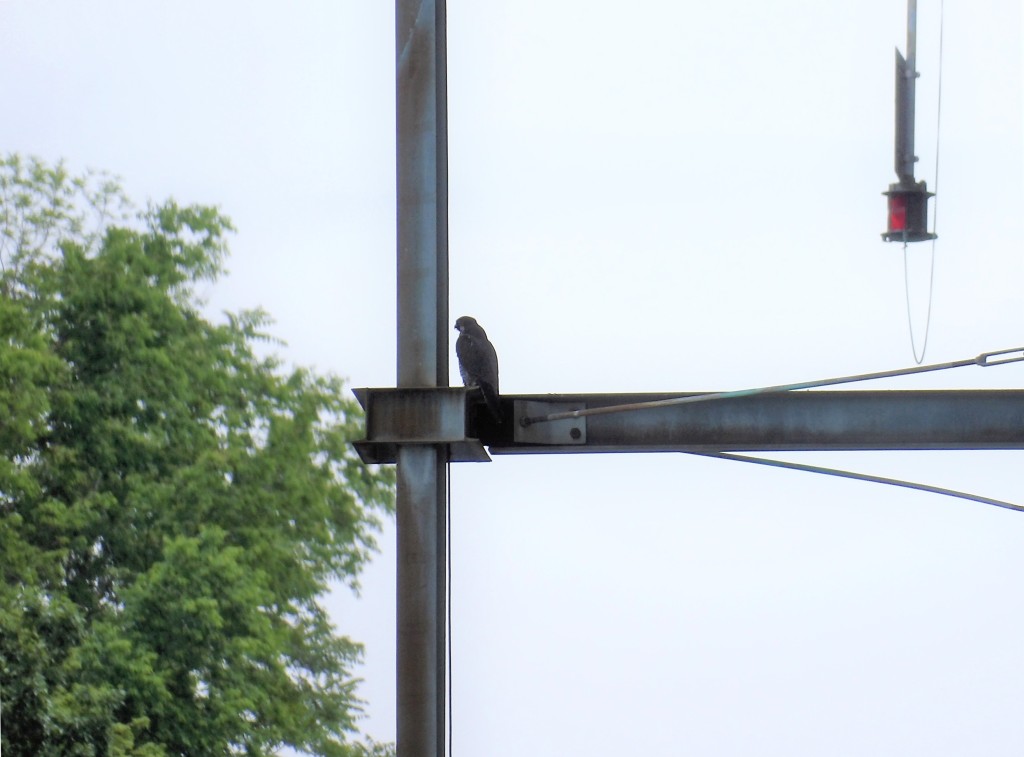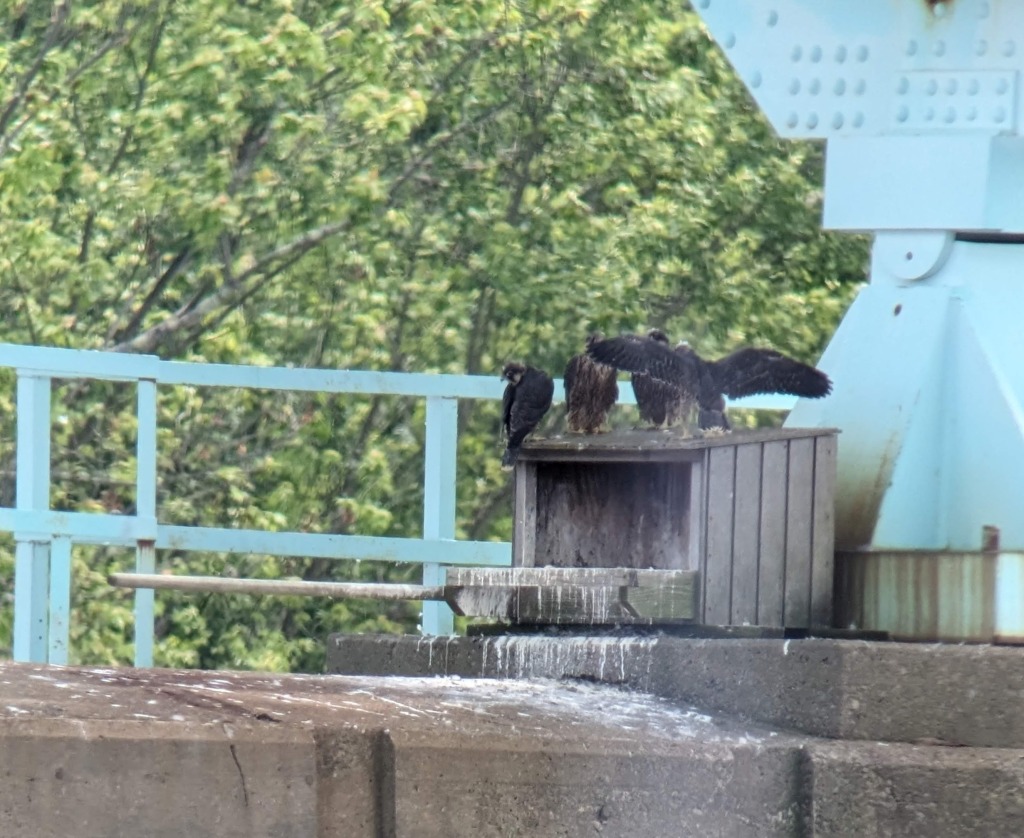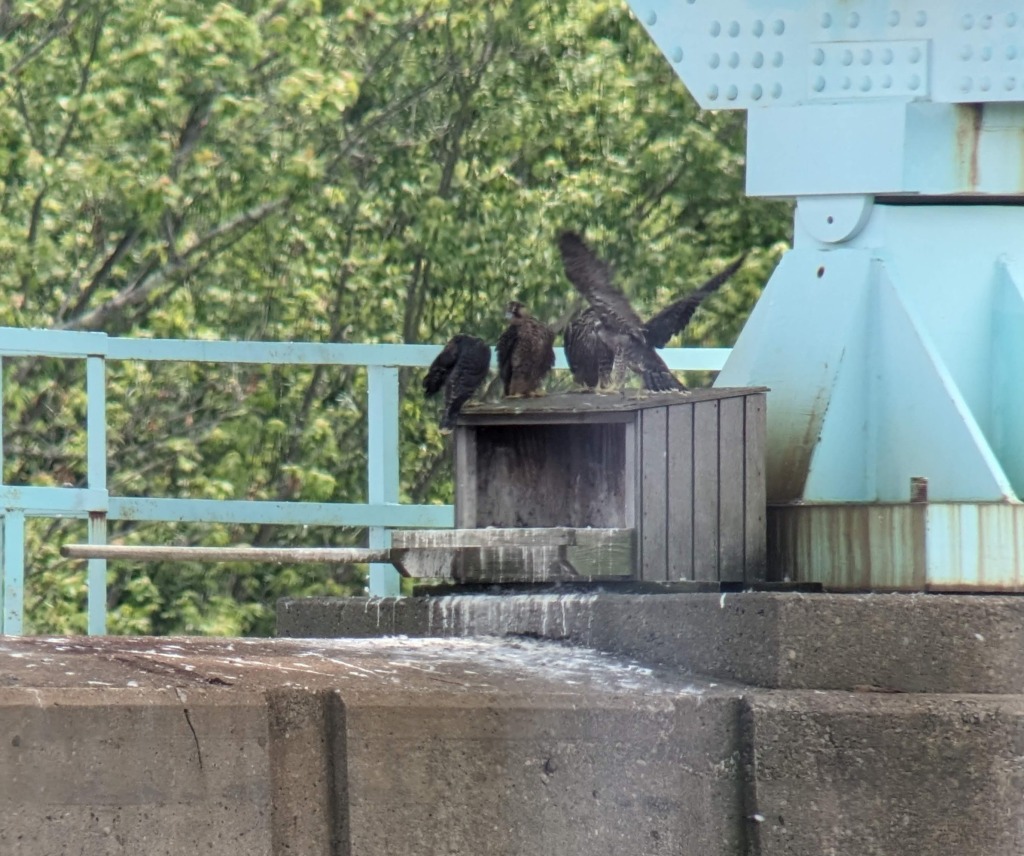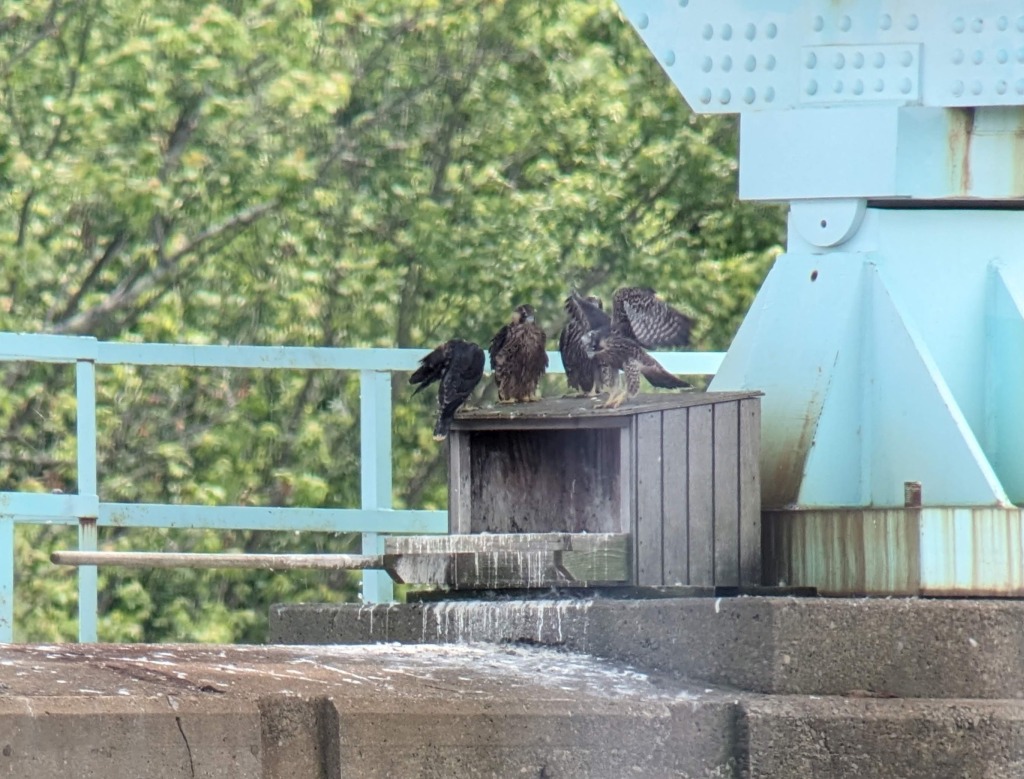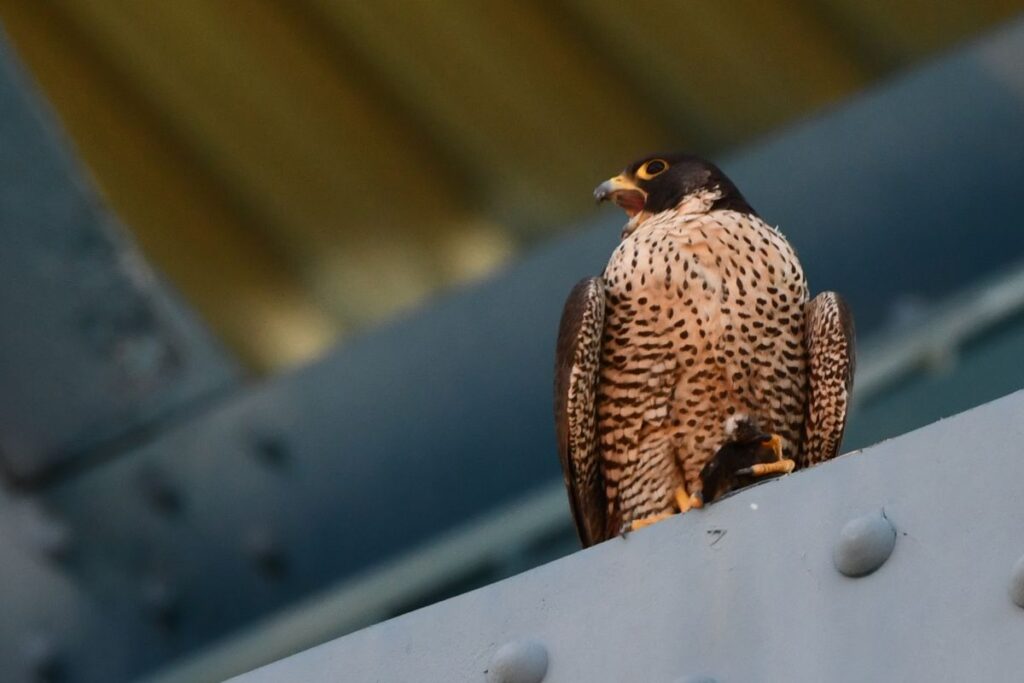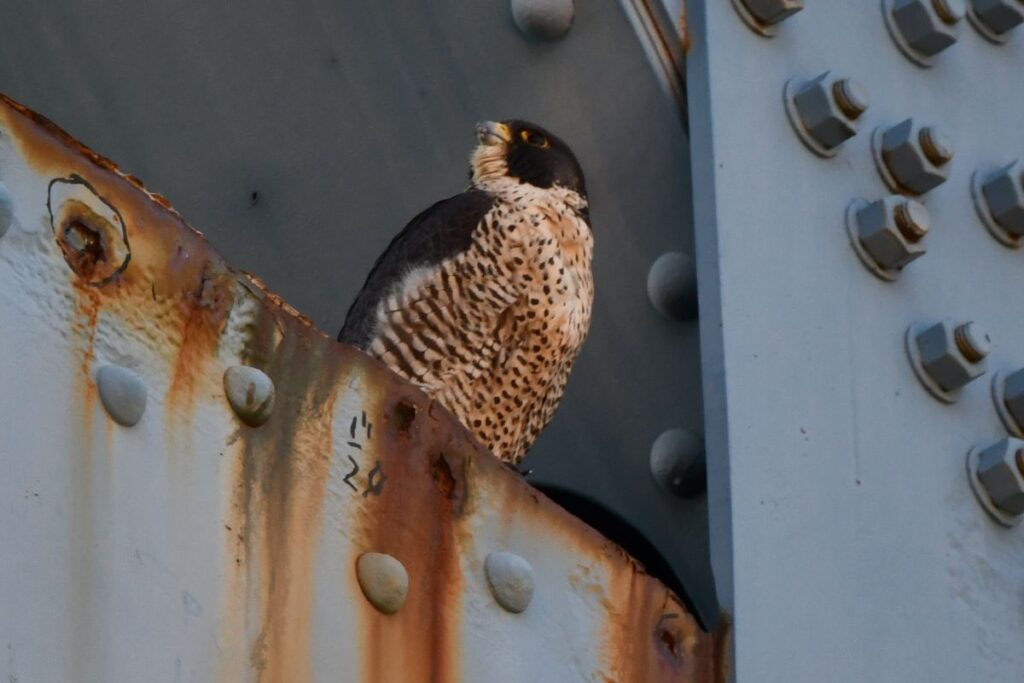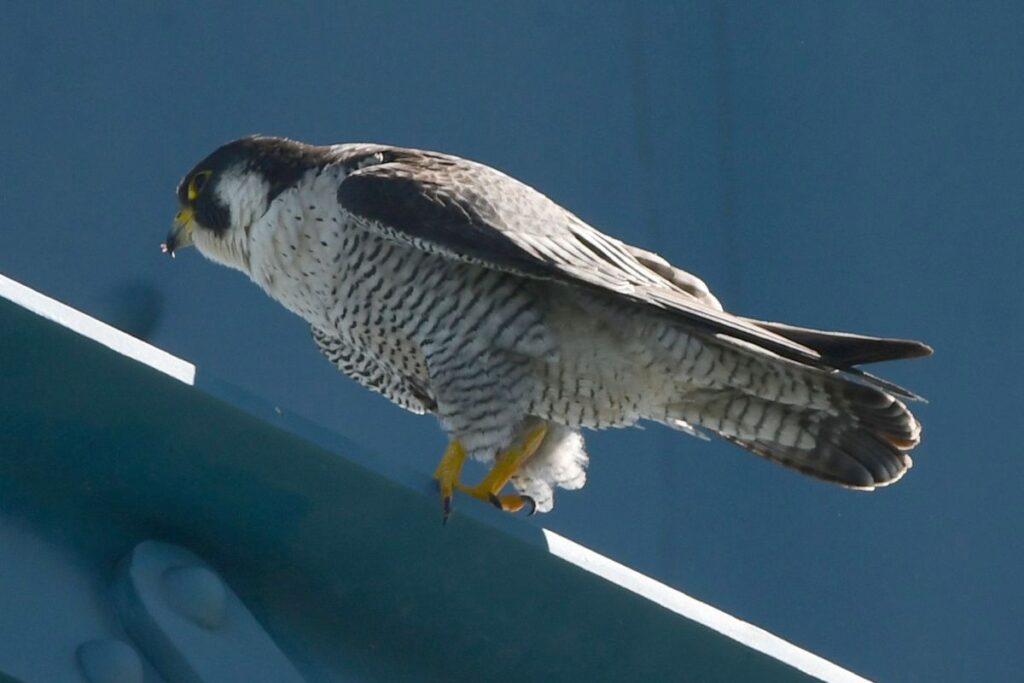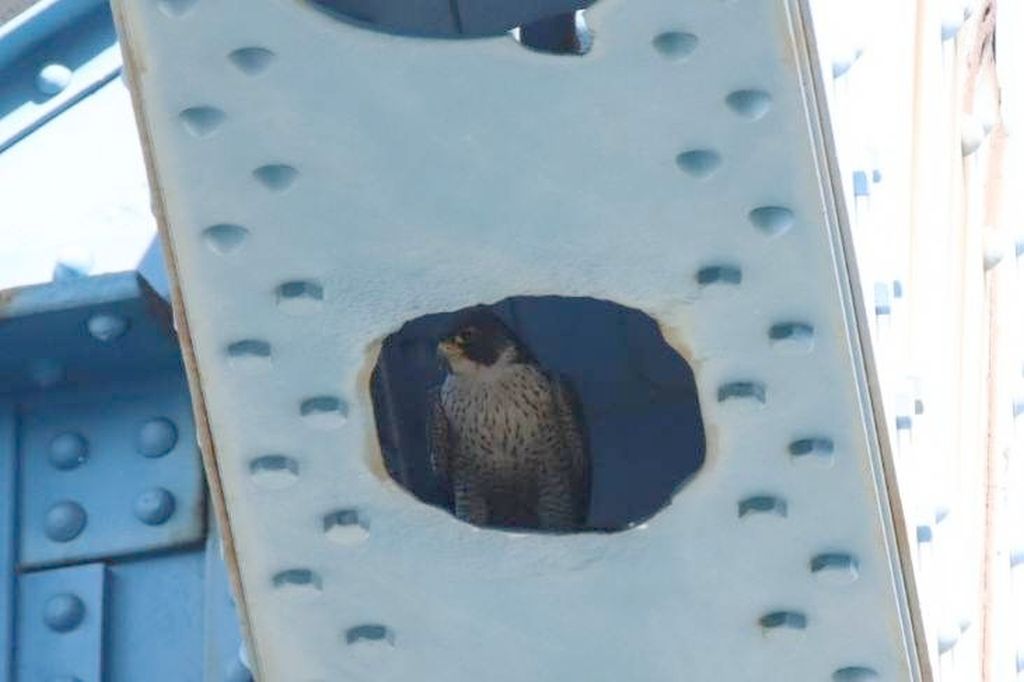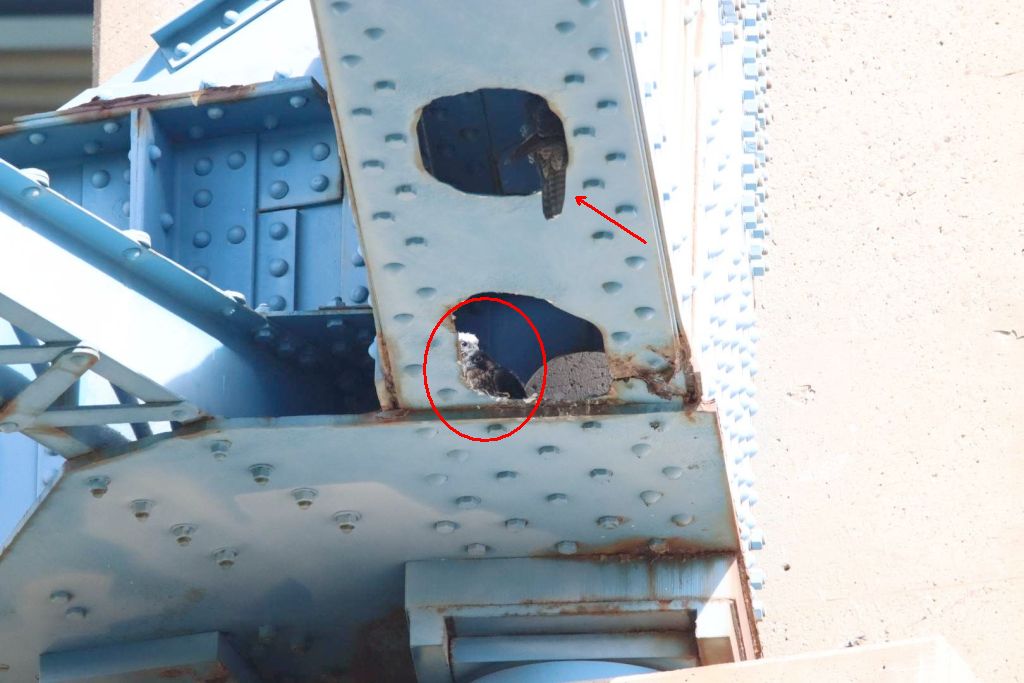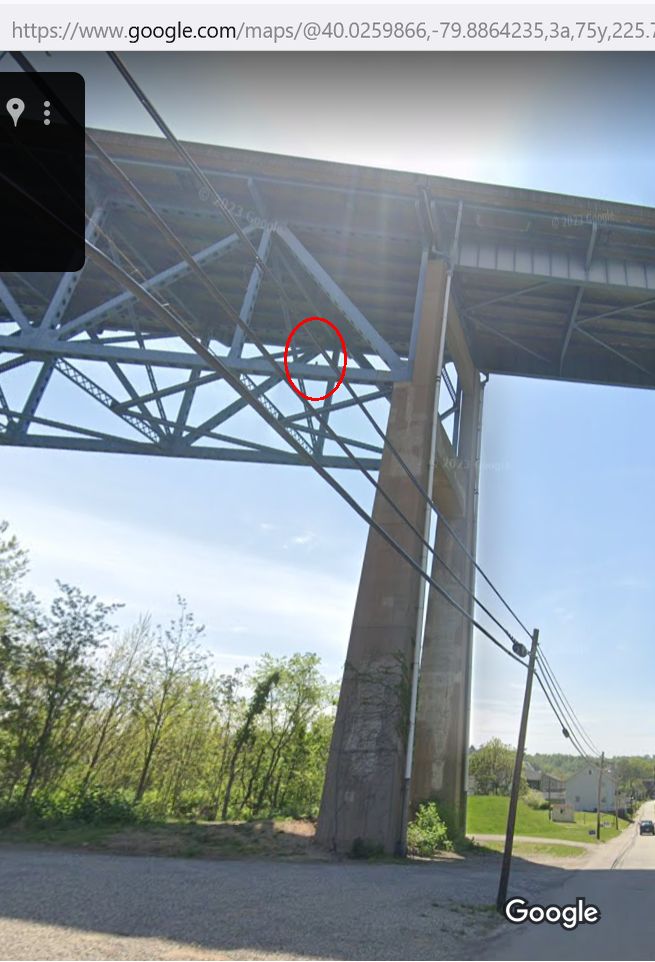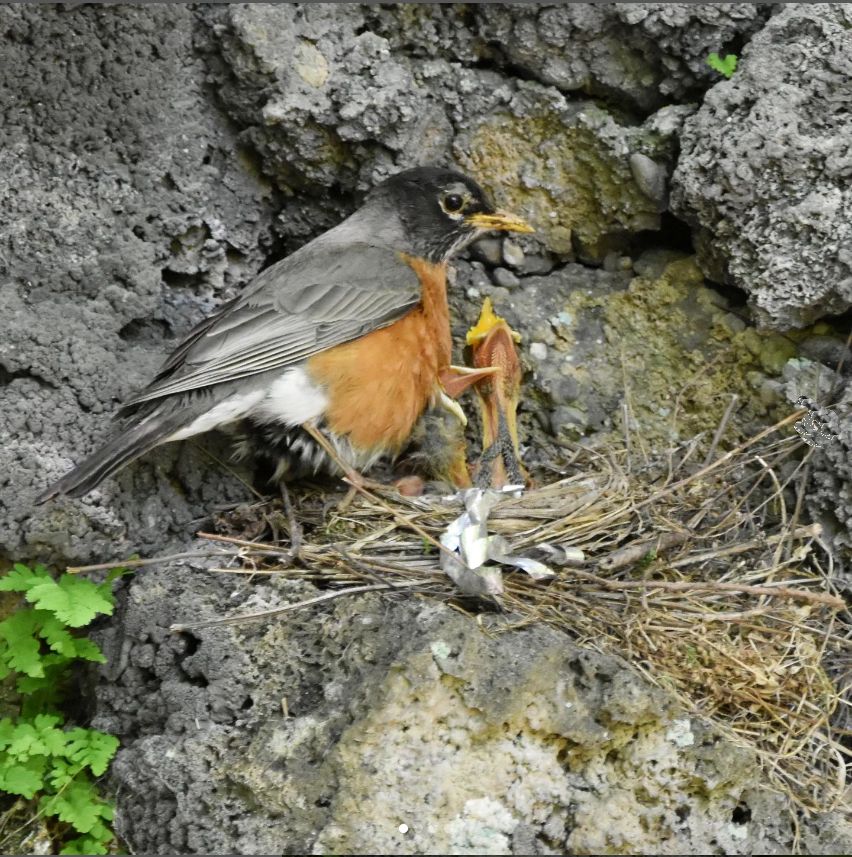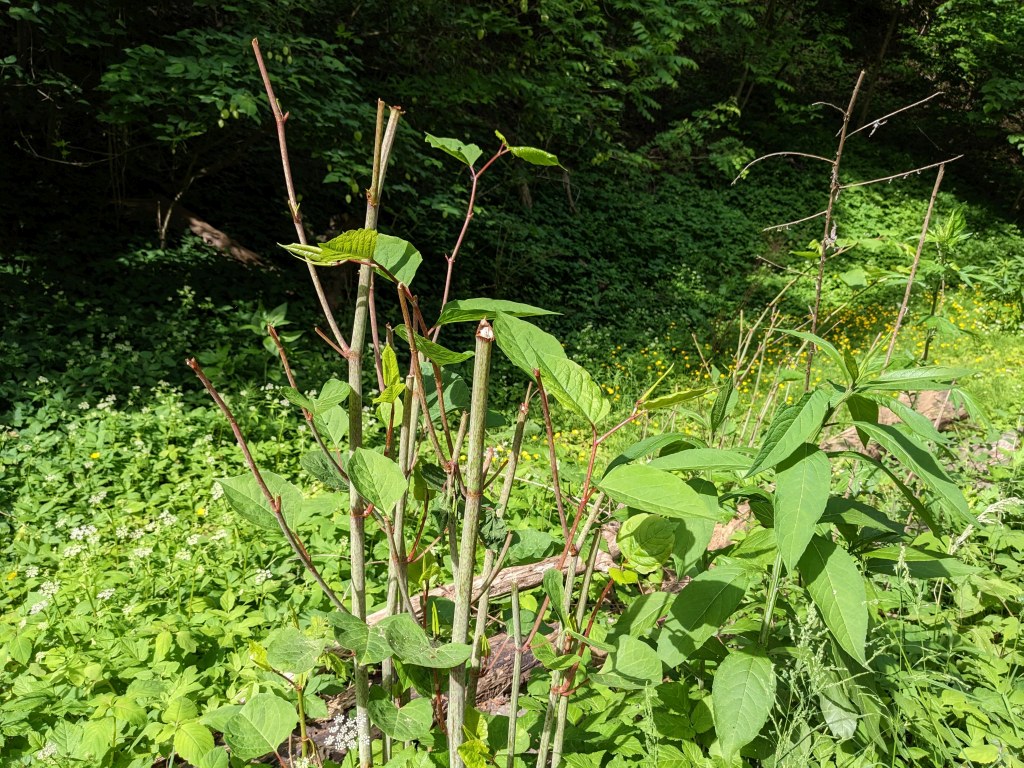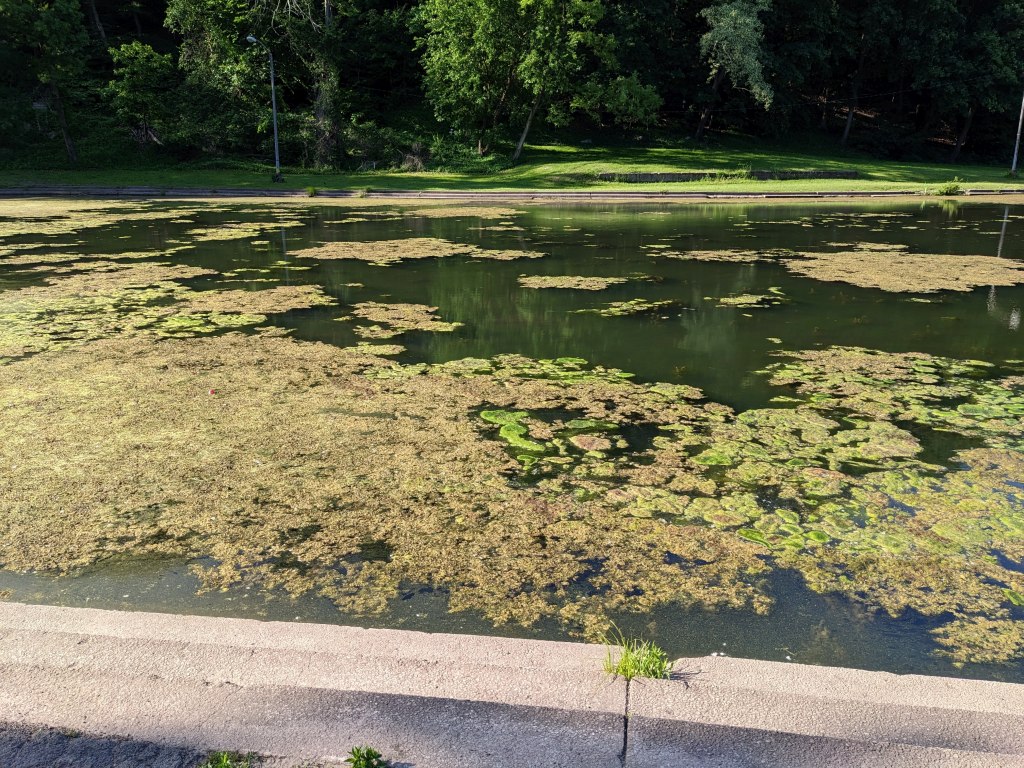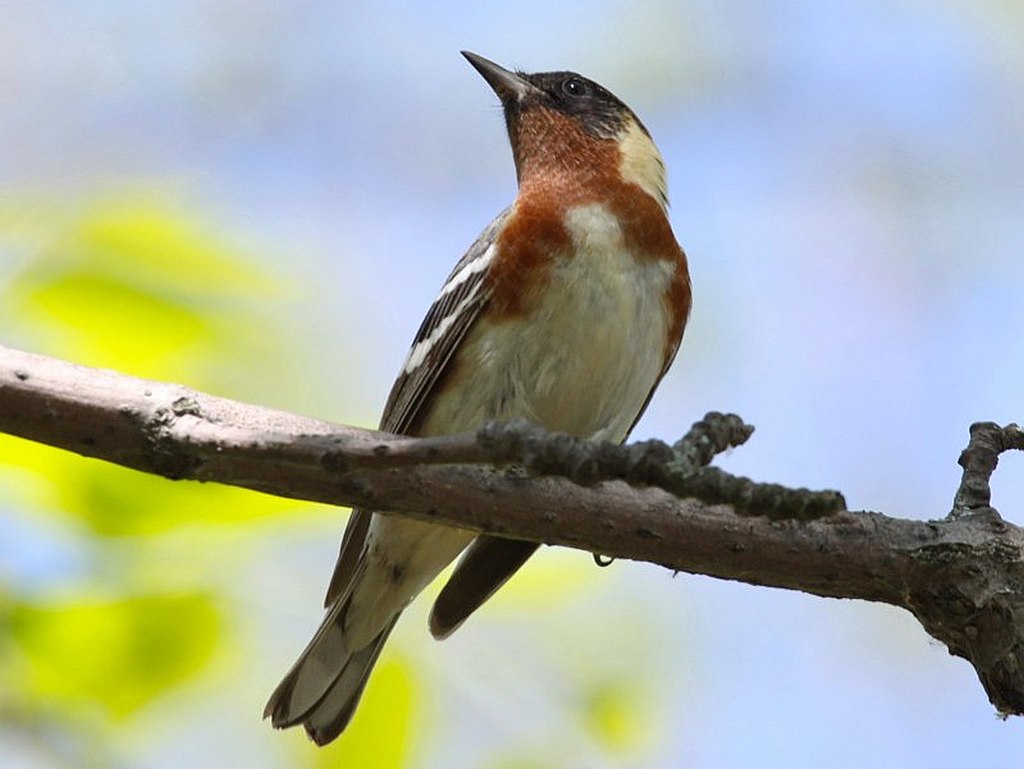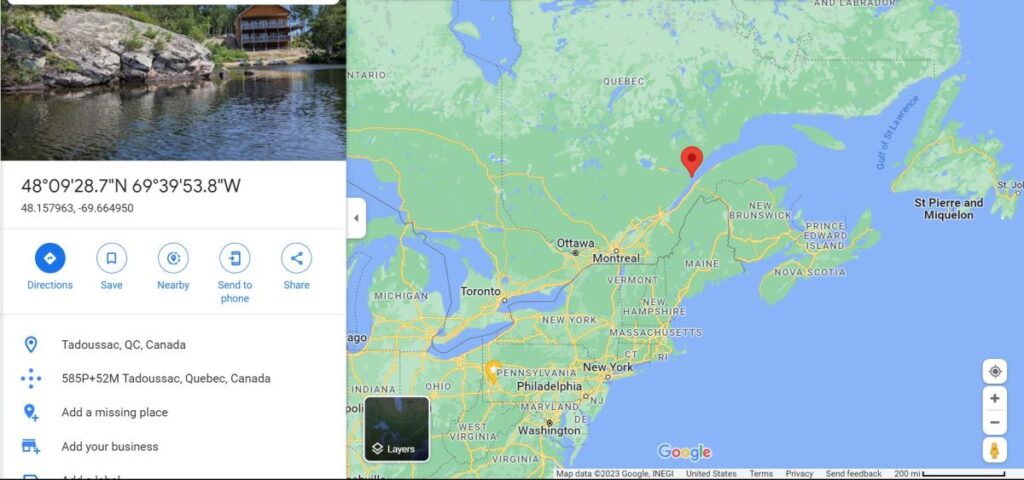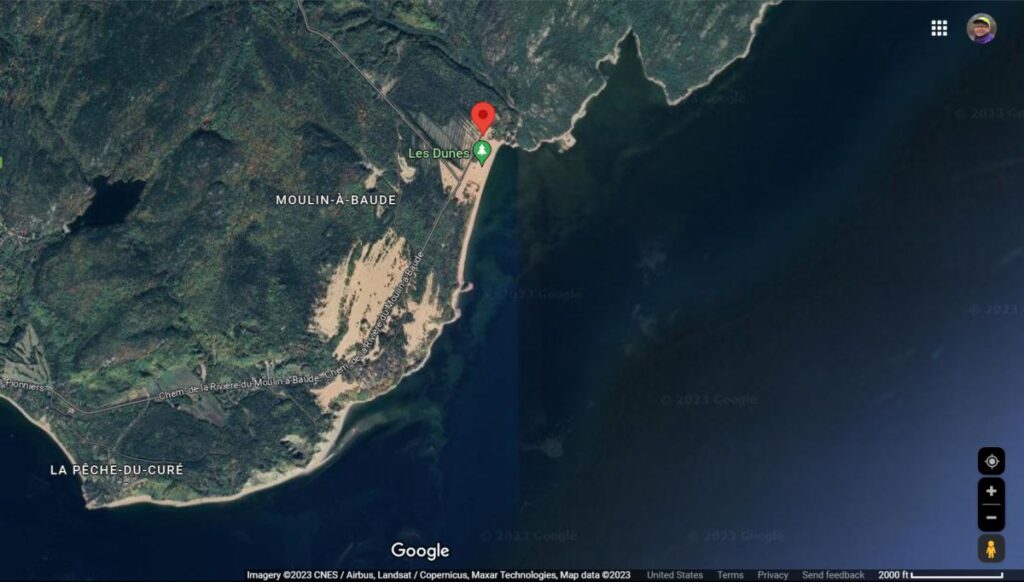
6 June 2023
On Saturday evening Jonathan Nadle took a photo of the setting sun glowing pink with threads of smoke across its face. The color was the result of wildfire smoke drifting in from western Canada.
Today Pittsburgh and much of the northeastern U.S. are under an air quality alert because the smoke is now at ground level. We don’t see it as smoke — it looks like haze — but the particles have put our air quality forecast into Code Orange = “Unhealthy for Sensitive Groups.” Young children, seniors, and those with respiratory problems should limit outdoor activities.
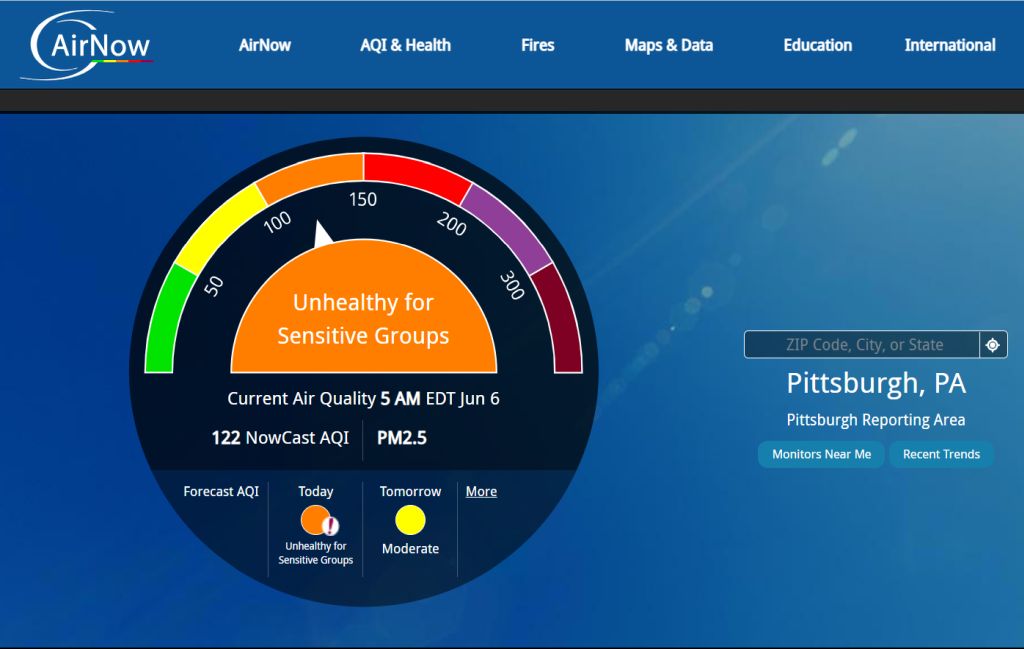
NBC News explains:
Millions of people across the Midwest are under dangerous air quality conditions Monday, as smoke from wildfires in eastern Canada wafts over the region.
Hazy skies have blanketed a wide swath of the country from the Ohio Valley to as far south as the Carolinas. Air quality advisories are in effect Monday in southeastern Minnesota and parts of the Upper Peninsula of Michigan, as well as in more than 60 counties in Wisconsin.
The spike in air pollution comes from wildfires that have been raging in the Canadian provinces of Quebec and Nova Scotia.
… Canada is experiencing one of the worst starts to its wildfire season ever recorded.
— NBC News: Air quality levels in parts of the U.S. plunge as Canada wildfires rage, 5 June 2023
There are wildfires across much of Canada right now — west and east — but the fires affecting Pittsburgh today are mostly in Quebec and nearly all are out of control, displayed as red dots on Canada’s interactive wildfire map. Click here or on the screenshot below to see the interactive map.
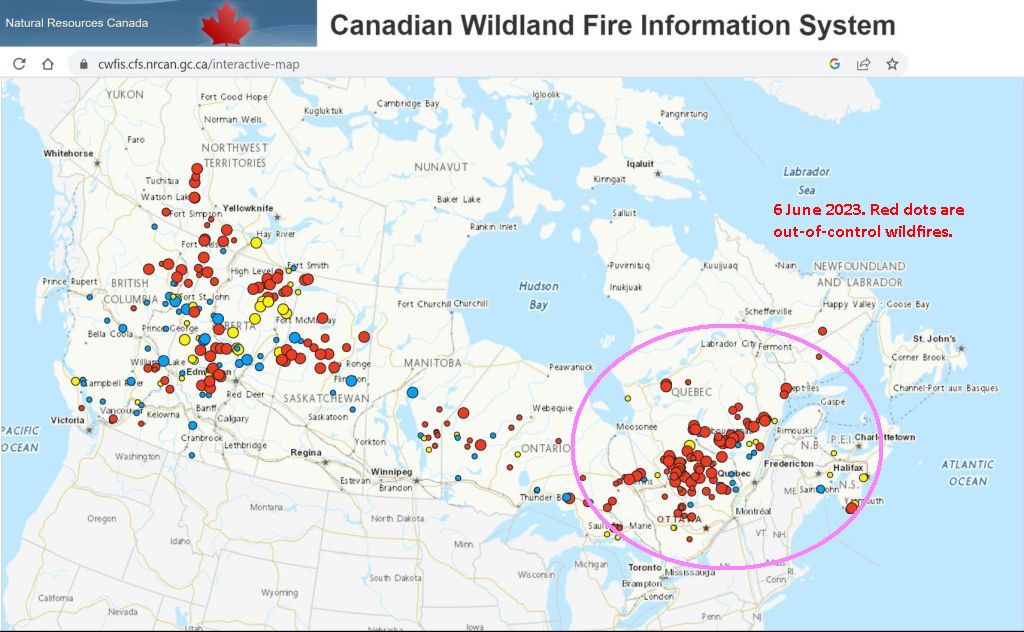
For Pittsburgh the smoke is mostly an inconvenience but for Canadians it is dangerous and for the birds that nest in these forests it is deadly. The fires are happening where northern warblers breed including bay-breasted, blackpoll, palm, Cape May and Tennessee.
When we see fewer of these migrating warblers in the fall, the fires will be partly to blame.
Unfortunately as climate change heats up the Earth and reduces rainfall, we can also expect more fires in North America’s forests.
Click here to see AirNow’s interactive air quality map centered on Pittsburgh, PA
(see photo and map credits in the captions)
Air Quality UPDATES
28-30 June 2032:
Wildfire smoke is back again, worse than before.
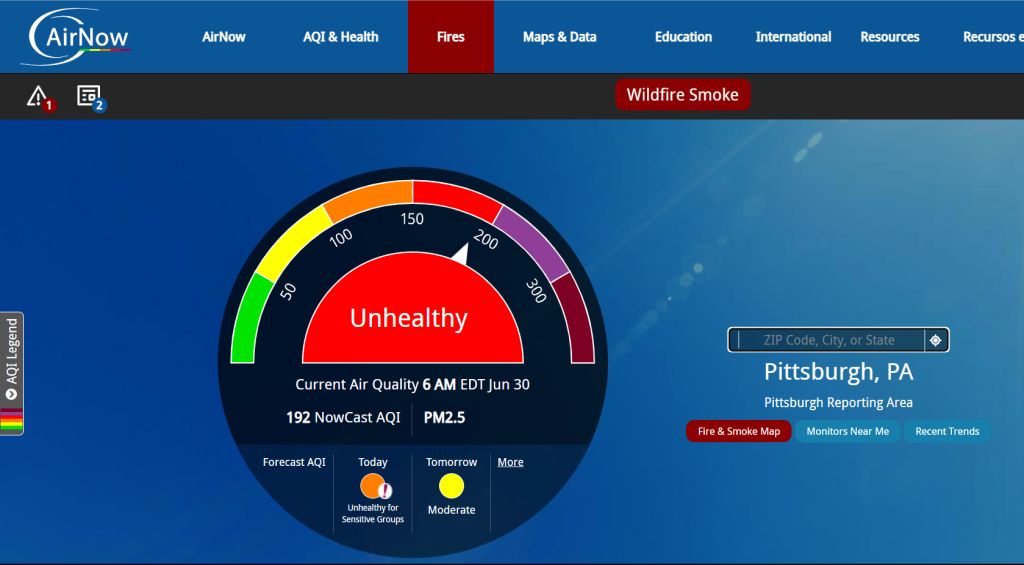
6-7 June 2023:
7 June 2023, 5:00am: The winds have changed. Pittsburgh air is still Unhealthy for Sensitive Groups this morning but it is much worse elsewhere. It is Very Unhealthy from Harrisburg to Philadelphia (purple), and Hazardous to breathe in a wide swath of Ontario including Ottawa (brown).
6 June satellite map:
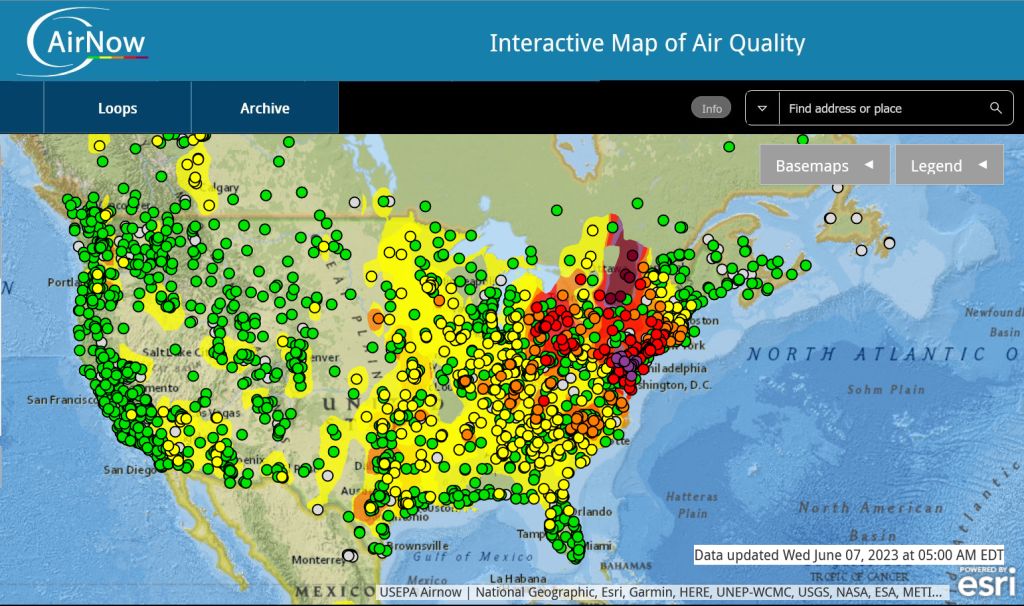
The Eastern US and Central Canada are suffering through one of their worst wildfire smoke events in recorded history.
— Colin McCarthy (@US_Stormwatch) June 6, 2023
New York City and Toronto have among the top 7 worst air qualities of any major city on Earth. pic.twitter.com/xt3JpyI7XB
